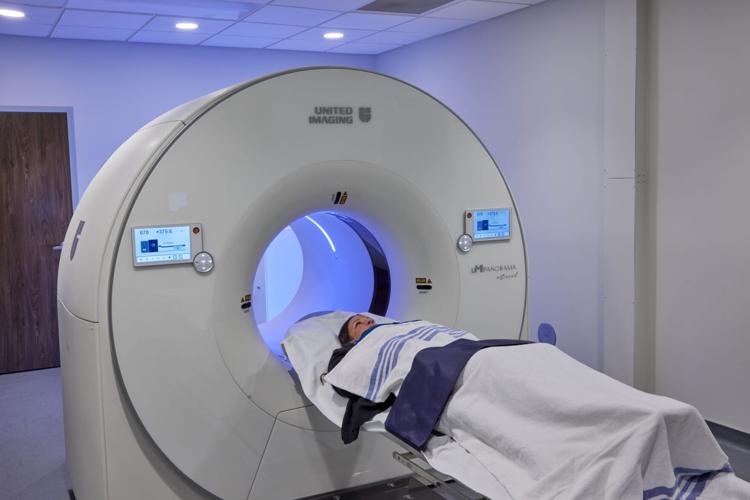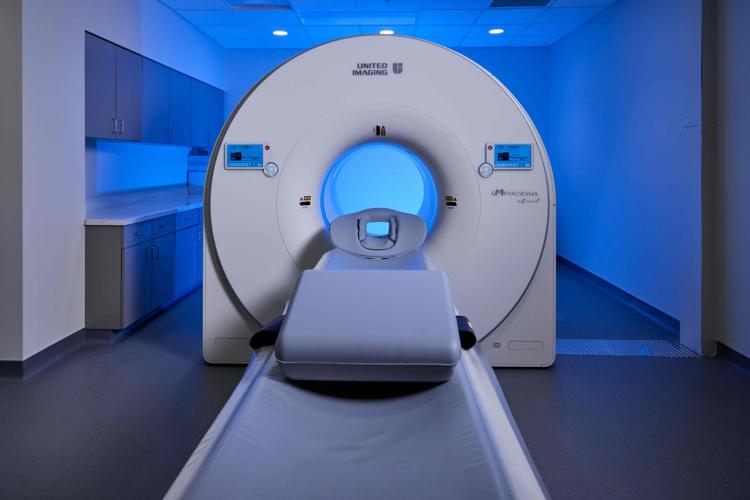A multimillion-dollar piece of equipment installed in January at Shreveport's Center for Molecular Imaging and Therapy will give patients a greater chance to survive breast cancer and show whether heart muscle is alive or dead in heart patients. It will identify high levels of PSMA, the antigen that signifies cancer, even when the prostate has been removed, will help with neurological issues like Parkinson's Disease and Alzheimer's and, perhaps, one day assist in drug addiction treatment – all by giving doctors a clearer picture of what is going on inside our bodies.
Louisiana Senator Dr. Bill Cassidy acquired $2 million in federal funding for the project. "As a doctor, ensuring patients have access to the best care possible is always a priority. "Part of keeping people in Louisiana is ensuring they have access to medical care and business opportunities," he told The Shreveport-Bossier City Advocate.
The new CMIT PET/CT is exciting for the health it will improve, the research it will enable and the business it will bring, said Dr. Stephen Lokitz, the interim director of the CMIT at 2120 Kings Highway, part of the region's "medical corridor".
The United Imaging PET/CT scanner in Shreveport is one of only two like it in the United States. The other is at the Huntsman Cancer Institute, part of the University of Utah health care system in Salt Lake City. Huntsman and CMIT will be using their scanners for research and patient medicine through doctor referrals.

The new United Imaging PET/CT scanner at Center for Molecular Imaging and Technology (CMIT), Shreveport.
THE CMIT scanner is already showing results in local patients.
"The very first patient that we did (on January 29), they saw something that on the new scanner was just plain as day and on the old scanner it was 'I think it's there', but we couldn't call it because we couldn't see it as well," Lokitz said. "Right out of the gate, it had clinical impact for the very first patient."
The way PET/CT scans work overall is the same. Patients are injected with a radioactive material, called a "radiotracer" and the PET takes pictures of where the material ends up. Diseased cells, like cancer cells, absorb a lot of the radiotracer material and that can indicate to doctors where in the body there are current or potential problems.
What has changed is that new technology, aided by artificial intelligence, is allowing a much more detailed view inside the body. Instead of giving the radiologists who are reading patient data 16 pieces of information to come up with an answer, the new machine is giving them 160 pieces.

Dr. Stephen Lokitz of CMIT showing the results of one of the PET/CT scans.
"The way it works is that we are basically taking slices of the body and stacking them up and making a three-dimensional representation of the image for the doctors to interpret. The CT Scanner part of the PET comes in various slices – our old camera is a 16-slice. We were shooting for 64 slices, we ended up with 160. That is something we are just beginning to understand how to put into play," Lokitz said.
Another benefit of the machine is that its field of view is larger. CMIT's older PET scanner has a 15-centimeter field of view, the new PET is 35 cm. "Now, we're looking at just a 10-to-12-minute scan, which is better for a lot of reasons, " Lokitz said. "Patients don't move as much, it's more comfortable, it's faster, they're not on a table as long," all of which leads to better scan results. Plus, Lokitz said, "We can find things they may not know are there yet."
CMIT is preparing for other local impacts from the new PET/CT unit. Lokitz predicts Shreveport will begin seeing cutting-edge clinical trials coming here instead of going to the M.D. Anderson Cancer Center in Houston or to medical centers on the east or west coasts.
He believes that the sky is the limit for not only the medical but the business opportunities generated by the new machine. "If this really works the way we think it's going to, then these clinical trial operations will have to send representatives here so often to watch … They're going to want a permanent presence here next to our building. I would like an office building next door for them," Lokitz said. "We will be a show site for the vendors, so they're going to bring customers here to see it in place. That will be really exciting for us and help us raise our profile. We'll have research agreements with them."

Dr. Stephen Lokitz and other members of the CMIT/United Imaging team.
"People are going to want to come to use this collection of resources, not just the resources but the expertise," Lokitz said. "That's what's unusual. The academic centers have the expertise but not necessarily the resources. The commercial centers have the resources but not the expertise," and the CMIT, he said, has both.
"At what point will doctors be able to start referring patients? Yesterday," he said with a laugh.
AS CMIT ramps up for the work created by the new PET/CT, they expect to be adding 15-25 more employees, too. "With Senator Cassidy's help, we were able to accelerate the program," he said. "I always tell people, if you get us money, I promise I can spend it. There are an unlimited number of things that we can do."





